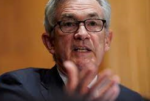Overview: Risk appetites are improving on the margin. Asia Pacific stocks still fell after the sharp losses on Wall Street on Monday. Still, China, Taiwan and Indian equities traded higher. Europe's Stoxx 600 is snapping a four-day 6.5%+ slide and is up around 1.2% in late European morning turnover. US equity futures are up over 1%. The 10-year Treasury yield that pushed to 3.20% yesterday is a little above 3% now. European benchmark yields are 5-7 bp lower and the peripheral premium has narrowed slightly. The US dollar is trading mixed. The Australian dollar, yen, and Canadian dollar are steady, while the Norwegian krone and the Swiss franc are laggards. Most emerging market currencies are firmer, including the Indian rupee, which fell to record lows yesterday.
Topics:
Marc Chandler considers the following as important: 4.) Marc to Market, 4) FX Trends, Currency Movement, currency war, EMU, Featured, Federal Reserve, Japan, Mexico, newsletter, sentiment, USD
This could be interesting, too:
Nachrichten Ticker - www.finanzen.ch writes Die Performance der Kryptowährungen in KW 9: Das hat sich bei Bitcoin, Ether & Co. getan
Nachrichten Ticker - www.finanzen.ch writes Wer verbirgt sich hinter der Ethereum-Technologie?
Martin Hartmann writes Eine Analyse nach den Lehren von Milton Friedman
Marc Chandler writes March 2025 Monthly
Overview: Risk appetites are improving on the margin. Asia Pacific stocks still fell after the sharp losses on Wall Street on Monday. Still, China, Taiwan and Indian equities traded higher. Europe's Stoxx 600 is snapping a four-day 6.5%+ slide and is up around 1.2% in late European morning turnover. US equity futures are up over 1%. The 10-year Treasury yield that pushed to 3.20% yesterday is a little above 3% now. European benchmark yields are 5-7 bp lower and the peripheral premium has narrowed slightly. The US dollar is trading mixed. The Australian dollar, yen, and Canadian dollar are steady, while the Norwegian krone and the Swiss franc are laggards. Most emerging market currencies are firmer, including the Indian rupee, which fell to record lows yesterday. The central bank reportedly intervened in the spot, forward and NDF markets. Today, the South Korean won, and Turkish lira are underperforming. Gold is holding above $1850 support. June WTI initially extended yesterday's pullback from the $110 area to test $100 before steadying. US natgas tumbled 12.6% yesterday after the pre-weekend drop of 8.4%. Today, it is off another 1.3%, and is below $7 for the first time in nearly two weeks. Europe's benchmark is off nearly 4% today after falling about 15% in the past two sessions. It is near last month's low. Iron ore fell 2.2% in Singapore. It is the sixth drop in the past seven sessions and has returned to levels last seen in mid-January. The June copper futures fell to the year's low yesterday and has steadied today. July wheat fell for the first time in four sessions yesterday but has come back bid today.
Asia Pacific
As Covid restrictions were eased, pent-up demand helped boost household spending in Japan even though wage increases are not keeping pace with inflation. Spending surged 4.1% in March over February, which was more than expected. The quarter ended on a firm note but not enough to offset the earlier weakness and spending fell around 1.8% on the quarter. Japan reports Q1 GDP next week and economists (median, Bloomberg survey) anticipate a 0.5% contraction.
Japan's Foreign Minister Hayashi became the latest international official to visit the Solomon Islands after a secret pact was signed with China. Clearly, many countries in the region, are concerned about an extended China presence. Prime Minister Sogavare claims that the Solomon Islands are being treated like children. The government insisted that the treaty does not allow for a permanent Chinese presence. The US had downgraded its own presence in the islands in 1993 when it closed its embassy, which had been open for five years. The US said it would re-open the embassy earlier this year but also warned Sogavare that it would "respond accordingly" if China builds a base or secure capability. The apt comparison may not be the Cuban Missile Crisis, but Ukraine. Kyiv has the right to choose its allies even if it is disruptive to some of its neighbors. Solomon Islands could be punished if it chooses wrong.
As US 10-year yields pulled back and briefly dipped below 3.0% after reaching 3.20% yesterday, the dollar slipped to a three-day low near JPY129.80. US yields stabilized and so did the greenback. It has settled in a JPY130.20-JPY130.60 range. Last week's low was seen around JPY128.65 and this needs to be taken out to signal a corrective rather than just the consolidative phase. The Australian dollar was sold to almost $0.6900, its lowest level since mid-2020, before rebounding to about $0.6985. Buying emerged in early Europe on a pullback toward $0.6940. A move above $0.7000 is needed to stabilize the technical tone. The greenback traded on both sides of yesterday's range against the Chinese yuan. It briefly traded above CNY6.74 for the first time since November 2020 before being sold off to almost CNY6.69 where it found a new bid. The PBOC set the dollar's reference rate lower than expected (CNY6.7134 vs. CNY6.7139). After three days of gains, the greenback is trading softer.
Europe
It may not be particularly clear in the PMI data, which has been holding up fairly well for the euro area. The April Composite PMI rose to 55.8 from 54.9 in March and 555.5 in February before the Russian invasion of Ukraine. But the economy is weakening. Last week, we learned that retail sales fell 0.4% in March, which was more than expected. At the end of this week, we will learn that industrial output slumped. Consider that last week Germany reported that March industrial output plummeted by 3.5% (the median in Bloomberg's survey expected a 0.4% decline). French industrial production fell by 0.5%, more than twice what had been expected. It followed a revised 1.2% decline in February (from -0.9%). It was the fourth decline in five months. Spain's industrial output contracted by 1.8% in March. The median forecast in Bloomberg's survey called for a 0.5% decline. Earlier today, Italy offered a pleasant surprise: Its industrial output was flat in March. Economists had forecast a 1.5% decline on the month. The aggregate figure for the eurozone is due at the end of the week. A 2% fall is expected, which would be the most since the pandemic first struck.
Sentiment is also falling. Last week, the EC confidence indicators for April were all weaker than expected. Yesterday, the May Sentix investor confidence measure fell to -22.6, worse than expected and the lowest since June 2020. Today was the ZEW survey. The eurozone expectations component approached the March 2020 low (-43.6) but recovered to -29.5 in May. In Germany, the assessment of the current situation deteriorated (-36.5 vs. -30.8), but expectations stopped a two-month dramatic slide. It had fallen from 54.3 before the Russian invasion of Ukraine to -41.0 in April. The "rebound” lifted it to -34.3 in May. The latest survey on Bloomberg put the risk of a recession in the eurozone at 35% of the next 12 month. The odds of a recession in the UK and Japan are put at 30%. The US is at 25% and Canada is 17.5%.
The euro has been bouncing along its trough around $1.0480 for the better part of two weeks. The upside blocked last week in the $1.0630-$1.0640 area. So far, today, it is holding above $1.0550, which, if sustained, would be the highest low since April 26. The intraday momentum indicators suggest there is scope for range-extension today to the upside and a close above $1.06 could lift the tone. However, the $1.0650 area needs to be overcome to signal a correction rather than consolidation. Sterling traded on both sides of the pre-weekend range yesterday but the close was a little lower. This is consistent with some sideways movement. Previous support at $1.2400 offers resistance. It is also the (38.2%) retracement of last week's BOE-induced slide. The intraday momentum indicators suggest a test on it is likely in North America today. Initial support is now seen near $1.2320.
America
The Financial Times citing the work of one bank suggests that we are in "reverse currency wars." Is that a helpful or accurate framing of the issue or is "war" an inflammatory image that is the material equivalent of click-bait? First, we would counter by saying that it is possible that the foreign exchange market could become an arena of competition and beggar-thy-neighbor strategies. However, there is an arms control agreement, and even if the edges fray a little, it is holding. Second, most central banks from high-income countries view the exchange rate in terms of financial conditions. When the monetary officials are reducing accommodation, they prefer to see currency appreciation. Depreciation, on the other hand, would blunt or offset the tightening of financial conditions that is sought. What seemed like a race-to-the-bottom was that there was a common shock and central banks were easing policy.
Central banks from high-income countries are mostly tightening financial conditions. There are three notable exceptions. The Swiss National Bank and the Bank of Japan are clearly feeling no sense of urgency. For the European Central Bank, it appears a rate hike is a question of time. The debate seems to be between July and September. The signals from policy makers suggest an "expeditious" campaign to above zero before the end of the year. Depending on several other variables, including openness of an economy, exchange rates can influence inflation. Given elevated prices in most many high-income countries, yes, it is given that exchange rates are being monitored. Yet, given the increase in volatility and the trend moves, foreign exchange rates do not seem to be particularly urgent. And what is the policy implication that the "reverse currency war" is supposed to do? The FT says that the bank estimates it to be worth 10 bp extra of tightening that will be required. This is a rounding error and speaks the exaggerated precision economists often use, not the kind of damage fitting of war imagery.
There are three key developments since last week's FOMC meeting. First, US rates are mixed. Since the night before the May 4th decision, the US 10-year yield has risen by about five basis points but was up closer to 23 bp at its peak yesterday. The two-year note yield has fallen 18 bp, and at yesterday's low point, had fallen 21 bp from the day before the FOMC hiked. Second, follows from the first point and is that the US 2-10 yield curve steepened. Both of those are consistent with the Fed not being as aggressive as the market expected. However, what challenges this narrative is that the 10-year breakeven (the difference between the conventional yield and the 10-year inflation protected security) has fallen. And it settled yesterday at its lowest level in two months (slightly below 2.75%).
Mexico's inflation accelerated last month, and the market expects the central bank to lift the overnight target rate by 50 bp on Thursday to 7.0%. The headline rate rose to 7.68% from 7.45%, which was slightly less than expected. However, the core rate rose slightly more than expected (7.22%, vs. 7.18%, the median forecast in Bloomberg's survey and 6.78% in March). The swaps market is pricing in about 115 bp of tightening over the next three months. This suggests two 50 bp moves with the risk of a 75 bp move.
The dollar traded above CAD1.30 yesterday for the first time since November 2020 as US equities cratered. Its gains were initially extended in the Asian turnover today (a little above CAD1.3035), but as equities stabilized, the greenback has pushed back below CAD1.30. Note that the CAD1.3025 corresponds to the (38.2%) retracement of the US dollar's decline from the pandemic high (~CAD1.4670). Hedging the large ($3.35 bln) option that expires today at CAD1.2935 may have contributed to the upward pressure on the exchange rate. Tomorrow, there is a $1.2 bln option at CAD1.30 that expires and $1.9 bln in options at CAD1.2950. We continue to see the key drag on the Canadian dollar coming the dramatic slide in equities rather than Canada's fundamentals. The greenback initially extended its gains against the Mexican peso. It rose to a five-day high near MXN20.44 to test the 200-day moving average before pulling back to around MXN20.3160 in the European morning. Nearby support is the MXN20.25-MXN20.30 band.
Tags: #USD,Currency Movement,currency war,EMU,Featured,federal-reserve,Japan,Mexico,newsletter,sentiment








